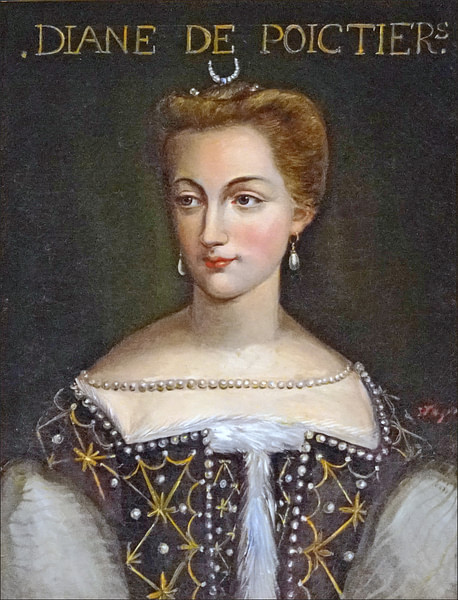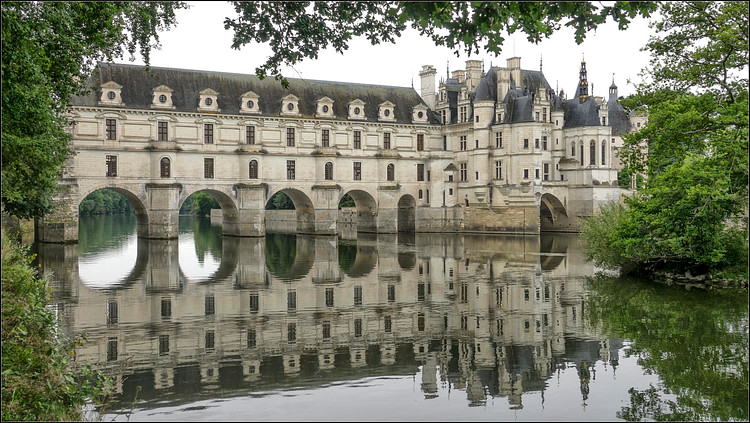
The Château de Chenonceau, picturesquely located astride the river Cher, in the Loire Valley town of Chenonceaux, France is a magnificent Renaissance-style building also known as le "Château des Dames" (the Ladies' Castle). Passing from hand to hand through the centuries amid lavish parties, complex intrigues, and many scandals, it is now the most visited private château in France.
Unlike its neighbour, the famous Château de Chambord, which is associated with many illustrious men, including Francis I of France (r. 1515-1547), Leonardo da Vinci (1452-1519) and the French playwright Molière (1622-1673) among others, the Château de Chenonceau was styled and embellished by great ladies such as Diane de Poitiers (1500-1566), Catherine de' Medici (1519-1589) and Katherine Briçonnet, to name a few.
Early history
During the Hundred Years' War (1337-1453), the residence of the Seigneur de Marques was a simple medieval fortress, strategically located to control river traffic and defend the city of Tours (loyal to the King of France). The castle was later destroyed in retaliation for being turned over to the English enemies by Jean I de Marques in 1412. Another member of the Marques family, Jean II, was granted royal permission to start building a new castle on the same site in 1432. Thomas Bohier (c. 1460-1524), a senior civil servant and mayor of Tours, had long coveted the Chenonceaux estate, and he was closely monitoring the demise of the Marques family. Bohier cunningly commissioned the purchase of several dependencies of Chenonceau, neighbouring domains and various annuities on this land. His plan was to force Pierre Marques to sell his main estate by demanding payments, which happened in 1513, but only after a very long legal battle.

Bohier and his wife, Katherine Briçonnet, started building an original castle on the foundations of the previous fortified mill. They had the old buildings demolished and kept only the keep (the Marques tower), which they modelled in contemporary Renaissance style. Unfortunately, Bohier followed the king on his Italian campaigns and his wife was left to continue the work, which was completed only in 1522. The building had been transformed into a magnificent two-storey residence with corbelled turrets strongly inspired by Italian architecture, as evidenced by the straight bannister staircase leading to the first floor. The couple died a few years after and their son, caught up in his father's alleged embezzlement, was forced to pay a fine of £90,000 or surrender the castle to the king, which he did, in 1535.
The "Château des dames"
Diane de Poitiers
Thus began the great era of the ladies of the château. In 1547, shortly after the death of Francis I, the château no longer belonged to his heir Henri II of France but to his favourite, Diane de Poitiers a distant cousin of his wife Catherine de' Medici. Almost 20 years older than the king, Diane was stunningly beautiful and remained so into her later years which is why she is often called Diane à l’éternelle jeunesse ('Diane with eternal youth'). She took great care of the estate's income, closely monitoring the rents of the tenant farms, mills, meadows and vineyards that depended on it. She even managed to convince the king to levy a new tax, part of which would be paid back to her: a tax on bells. Henry II imposed a tax of 20 pounds on the jewels and factories of each church tower, despite the protests of the people. In 1551, Diane de Poitiers laid out the gardens on the right bank of the Cher (Diane's parterre). She also wanted to extend the château by building a gallery over the river but only had time to build the bridge across. As it happened, the king sustained an eye injury during a medieval tournament on 30 June 1559 and died a few days later as a result of his injury. She had to surrender the castle to Catherine de' Medici, who granted her the castle of Chaumont sur Loire, which she would never occupy. She would pass away in 1566, probably poisoned by the gold she regularly ingested in the form of a drinkable solution, the secret elixir of long life and beauty used by the lady who looked 20 years younger than she actually was.
Catherine de' Medici
It was Catherine de' Medici who would commission the famous grand gallery (in fact two superimposed galleries 197 feet long and 19 feet wide) designed by Philibert de l'Orme (also written Delorme), where she would hold sumptuous festivities in honour of various distinguished guests. One of these, in honour of her son Henry III of France (r. 1574-1589), took place on 9 June 1577 and came to be known as le bal des seins nus (the topless ball). Author Florence Macquarez recounts the event in the words of one of the attendees:
In his memoirs, Pierre de l'Estoile recounts: In this beautiful banquet, the most beautiful and honest women of the court, being half naked and having their hair loose, were employed to serve.
(61)
When Catherine died, her daughter-in-law Louise de Lorraine, wife of Henri III, inherited the château. It was at Chenonceau that she would learn of her husband's assassination on 2 August 1589, and she mourned him dressed all in white (as was the custom) and so was henceforth nicknamed the "White Lady". The time for festivities was over, replaced by a pious silence echoing the prayers of the nuns who lived in the attics of the castle.
Louise Dupin
In 1733, Louise de Fontaine became the new lady of the château after her husband, Claude Dupin, a senior civil servant, became the owner. A great admirer of the encyclopaedists and of new ideas, Louise Dupin led a peaceful and benevolent life there, holding numerous salons to which she invited the intellectuals of the day, such as playwright Pierre de Marivaux (1688-1763) and Voltaire (1694-1778), who stayed there, as well as Jean-Jacques Rousseau (1712-1778), who acted as tutor to the family's son. During the French Revolution (1789-1799), "citizen" Dupin (the revolutionaries had abolished all titles of nobility and called everyone a "citizen", even King Louis XVI of France, r. 1774-1792, who had become "citizen" Capet) transformed the chapel into a wood storehouse to avoid any attacks from the revolutionaries. Unlike other châteaux, Chenonceau was not attacked, possibly because it was the only bridge in the vicinity. Louise Dupin, "the Literary Lady of Chenonceau", died in 1799 and was buried in the grounds of the château.
Marguerite Wilson
Under the First French Empire, castle life resumed while the château remained in the hands of its owners. In 1864, the last Dupin heir sold the château to Marguerite Pelouze (née Wilson), daughter of Daniel Wilson, a British engineer who had made his fortune in gas lighting in Paris. Marguerite was married to Eugène Pelouze, who applied for a separation from bed and board following a "family tragedy": he allegedly caught his wife in an "equivocal" situation with her own brother Daniel. This would not be the only scandal associated with the Wilson family. Marguerite Wilson continued the château's literary tradition by holding salons and welcoming prestigious guests such as the author Gustave Flaubert (1821-1880) and the composer Claude Debussy (1862-1918), as well as Jules Grévy (1807-1891), President of the French Republic (with whom she was said to have had a scandalous liaison). The scandal of her affair with Jules Grévy, compounded by the fact that her father was allegedly involved in a murky affair involving trafficking in Légions d'honneur awards, finally caught up with her. Marguerite was destabilised and in debt, as a result, the Crédit Foncier, a major French bank at the time, had the château seized in 1889.
Architectural Features & Gardens
All these women of course had a profound and lasting impact on the development of the château as they transformed it according to the fashions of the time as well as to their personal tastes. Katherine Briçonnet and her husband eventually had the old castle and mill razed to the ground (except for the castle keep) in order to build a brand new castle where the mill once stood. In fact, the forecourt where the keep stands today is the area on which the old fortified castle, bounded by the moat, was built. Deeply influenced by the Italian style of architecture, their legacy mainly resides in the keep that seems to welcome visitors. The old keep, crowned by a decorative parapet walk, was adorned with two dormer windows and a lantern caps the conical roof. You can still feel the presence of Katherine and Thomas in the castle today: their respective emblems can be seen on the huge entrance door and Tomas Bohier's motto can be read on the oak door of the guard room: S'il vient à point, me souviendra ("If it gets completed, I will be remembered"). Sadly, Thomas and Katherine died before they could realise all the things they had planned to achieve. In his book Les châteaux de la Loire, Jean des Cars cites Jean-Pierre Babelon and gives us the following description:
What does the château look like? Typical of the Renaissance period, the castle is a rectangular structure with four cylindrical turrets. The originality of the design lies elsewhere, however, with each floor comprising a central gallery lit by a French window opening directly onto the river, with the staircase to the side. 'One wonders whether Thomas Bohier did not borrow this extraordinary idea from Italy. Didn't the Venetian palace offer the model of a residence designed around water, with a central gallery repeated on every floor and a staircase placed to one side, thus offering an unobstructed view of the canal?'
(178)
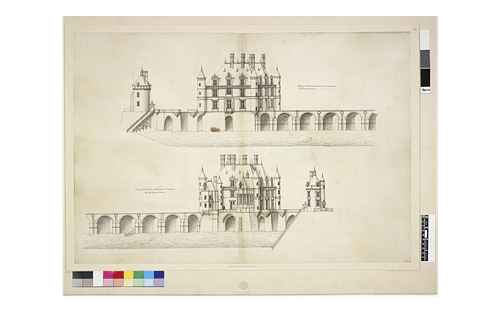
As for Diane de Poitiers, she gave the château the exterior appearance we know today. She had superb 130,000 sq feet gardens laid out (12,000 m²) with geometric paths, numerous fountains, and a wide variety of plants, including white mulberry trees for rearing silkworms. She also asked the architect Philibert de l'Orme to follow Thomas Bohier's plans and so had the bridge built across the river. The bridge would be completed, but the king's untimely death prevented her from proceeding further with her plans. Catherine de' Medici took over Chenonceau and had the immense two-storey gallery built on the bridge that Diane had so much desired: 18 windows light up the 197-foot (60-metre) gallery. Catherine also financed the creation of a garden, albeit smaller than that of her rival (c. 60,000 sq feet or 5,500 m²). This garden of curiosities had many rare plants and exotic animals. The layout is structured around five grass panels, grouped around an elegant circular pool and punctuated by a pattern of boxwood balls. In a clearing in the park, she also created a labyrinth with more than 2,000 yew trees, with a central folly offering an impressive view of the whole ensemble. Subsequent owners would mostly have an impact on the interior design of the château.
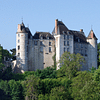
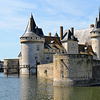
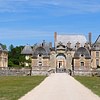
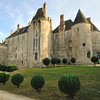
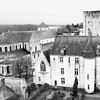
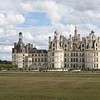
Gallery of the Chateaux of the Loire Valley
The Château in the XX & XXI centuries
In 1913, Henri Menier (1853-1913), the famous French maker of chocolate, became the owner of Chenonceau, but he died shortly afterwards. His brother Gaston inherited and set up a military hospital in the gallery of the château during the First World War (1914-1918). He financed everything out of his own pocket until 1919. From 1940 to 1942, the château was situated on the demarcation line between occupied and free France. The entrance to the château was therefore in the occupied zone (on the right bank) and the gallery, whose south door gives access to the left bank, enabled the French Resistance to smuggle many people into the free zone. The 20th century also had its share of illustrious guests, including Harry Truman (1884-1972), Charles Lindbergh (1902-1974) and Giovanni Agnelli (1921-2003), the famous Italian industrialist and chairman of FIAT, to name but a few.
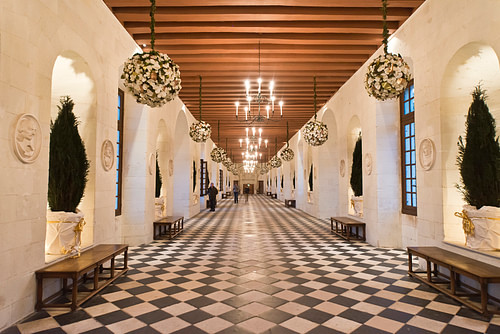
The château was listed as a historic monument in 1840, and so were the grounds in 1962. The building and its surroundings have been part of the Val de Loire (Loire Valley), a UNESCO World Heritage site, since 9 July 2017. Today, the Menier family still watches over this magnificent building, a witness to the Renaissance and the history of France since that time. Managed with brio since 2002 by Laure Menier, widow of the rightful heir Jean-Louis Menier, she was ousted by her sister-in-law Pauline Menier, who became the manager in June 2023. Ironically, although it enjoys a unique position as it straddles the calm Cher River, the history of the Château de Chenonceau has not been quite as tranquil. It would seem that, amid new waves of rivalry and power struggles, the "Château des Dames" still, more than ever, lives up to its name.
